When comparing the Dacia Sandero and the Kia Stonic, buyers are often faced with a decision between two very different driving experiences within a compact yet practical package. Both vehicles cater to budget-conscious consumers, yet they bring unique features to the table. Here’s an in-depth look at how these two standout models fare against each other, focusing on technical aspects and innovations.
Dacia Sandero vs Kia Stonic – Which one offers the better deal?
Everyday use, family trips or long-distance drives – here’s where the differences show.
Discover whether Dacia Sandero or Kia Stonic fits your lifestyle better.
Design and Body Type
The Dacia Sandero is a hatchback, emphasizing practicality and efficiency, while the Kia Stonic falls into the SUV category, providing a slightly elevated ride height and a more robust stance on the road. With a length of 4,088 mm, the Sandero maintains a compact profile, ideal for urban driving. On the other hand, the Stonic is marginally longer at 4,140 mm, which contributes to its spacious interior and cargo capacity of 352 liters—slightly more than the Sandero’s 328 liters.
Engine and Performance
Engine options are where these two cars start to diverge significantly. The Dacia Sandero offers a range of petrol engines with outputs from 67 HP to a punchy 110 HP. Its LPG variant is particularly appealing for those looking to save on fuel costs. The Kia Stonic, albeit having fewer power options, includes a promising 100 HP petrol engine as well as a mild-hybrid variant that caters to eco-conscious drivers.
When it comes to acceleration, the Sandero's agile performance is reflected in its best 0-100 km/h time of 10 seconds for the more powerful variants. The Stonic slightly trails with a best time of 11.3 seconds, although it compensates with a higher torque from its diesel model reaching 200 Nm, compared to the Sandero's 170 Nm.
Transmission and Drive Configuration
Both vehicles feature front-wheel drive as a standard, ensuring stability and ease of handling. The Sandero is equipped with flexible transmission options, providing a manual gearbox as well as a CVT for those who prefer seamless gear changes. The Stonic, meanwhile, offers a manual gearbox and a dual-clutch automatic transmission, optimizing both efficiency and responsiveness during drives.
Fuel Efficiency
Fuel efficiency is a crucial consideration for many buyers. The Sandero excels with consumption figures, ranging from 5.2 to 7 L/100km, showcasing its ability to deliver economic performance across various driving conditions. The Stonic’s consumption, while slightly higher at 5.5 to 5.8 L/100 km, still proves competitive in the compact SUV segment, particularly appealing to those who want the SUV advantage with relatively low operating costs.
Interior and Technology
Comfort and technology are paramount in any modern vehicle. The Sandero’s interior may lean towards functionality with focus on practicality, but it doesn’t skimp on tech, offering features such as smartphone connectivity. The Stonic, as an SUV, leans into a slightly more upscale interior, featuring more contemporary design elements and advanced infotainment systems that create a more engaging driving experience.
Safety and Innovations
In terms of safety, both vehicles come equipped with essential safety features, but the Kia Stonic presents a slight edge with its advanced driver assistance systems. These features promote peace of mind for drivers and passengers alike, contributing to higher safety ratings in crash tests.
Final Thoughts
Ultimately, choosing between the Dacia Sandero and the Kia Stonic will depend on your individual needs and preferences. If you prioritize affordability, practicality, and excellent fuel efficiency, the Sandero shines brightly. However, if you’re looking for a robust SUV with enhanced tech and performance, the Kia Stonic could be your ideal match. Both cars offer impressive features and specifications, ensuring that drivers receive value for their investment.
Here’s where it gets real: The technical differences in detail
Costs and Efficiency:
Price and efficiency are key factors when choosing a car – and this is often where the real differences emerge.
Dacia Sandero has a decisively advantage in terms of price – it starts at 10700 £, while the Kia Stonic costs 19400 £. That’s a price difference of around 8743 £.
Fuel consumption also shows a difference: Dacia Sandero manages with 5.30 L and is therefore hardly perceptible more efficient than the Kia Stonic with 5.50 L. The difference is about 0.20 L per 100 km.
Engine and Performance:
Power, torque and acceleration say a lot about how a car feels on the road. This is where you see which model delivers more driving dynamics.
When it comes to engine power, the Dacia Sandero has a barely noticeable edge – offering 110 HP compared to 100 HP. That’s roughly 10 HP more horsepower.
In acceleration from 0 to 100 km/h, the Dacia Sandero is a bit quicker – completing the sprint in 10 s, while the Kia Stonic takes 11.30 s. That’s about 1.30 s faster.
In terms of top speed, the Dacia Sandero performs barely noticeable better – reaching 183 km/h, while the Kia Stonic tops out at 179 km/h. The difference is around 4 km/h.
Both models offer the same torque – 200 Nm.
Space and Everyday Use:
Beyond pure performance, interior space and usability matter most in daily life. This is where you see which car is more practical and versatile.
Both vehicles offer seating for 5 people.
In curb weight, Dacia Sandero is barely noticeable lighter – 1089 kg compared to 1195 kg. The difference is around 106 kg.
In terms of boot space, the Kia Stonic offers hardly perceptible more room – 352 L compared to 328 L. That’s a difference of about 24 L.
In maximum load capacity, the Kia Stonic performs hardly perceptible better – up to 1155 L, which is about 47 L more than the Dacia Sandero.
When it comes to payload, Kia Stonic barely noticeable takes the win – 455 kg compared to 436 kg. That’s a difference of about 19 kg.
Who wins the race?
The Dacia Sandero proves to be wins the duel decisively and therefore becomes our DriveDuel Champion!
Dacia Sandero is the better all-rounder in this comparison.
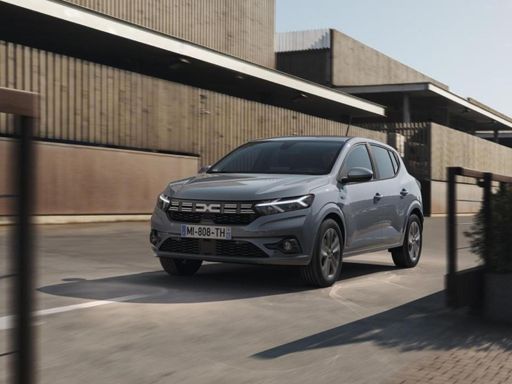 @ Dacia / Renault Group Media
@ Dacia / Renault Group Media
Dacia Sandero
Dacia Sandero
The Dacia Sandero is the everyman's hatchback — unpretentious, practical and brilliantly affordable, with sensible space and straightforward charm where it matters most. It won't wow in the premium lane, but for buyers who want honest, dependable transport without showroom theatrics, the Sandero is a clever, no‑nonsense pick that keeps running costs low and grin levels high.
details @ Dacia / Renault Group Media
@ Dacia / Renault Group Media
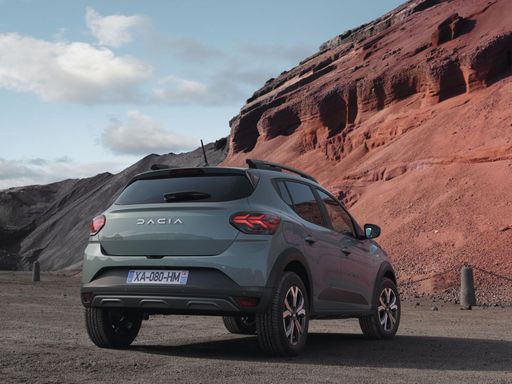 @ Dacia / Renault Group Media
@ Dacia / Renault Group Media
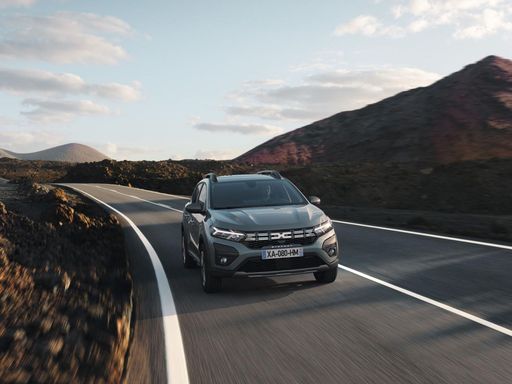 @ Dacia / Renault Group Media
@ Dacia / Renault Group Media
Kia Stonic
The Kia Stonic is a compact crossover that seamlessly blends bold design with practical functionality. Its distinctive, eye-catching exterior is complemented by a well-crafted interior offering a comfortable ride and intuitive technology for today's drivers. The Stonic is perfect for urban environments, providing agility and efficiency without compromising on style or performance.
details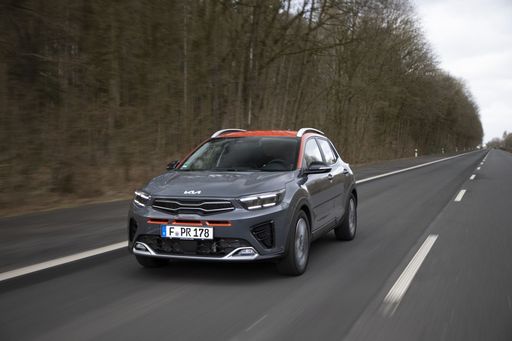 @ Kia Corporation
@ Kia Corporation
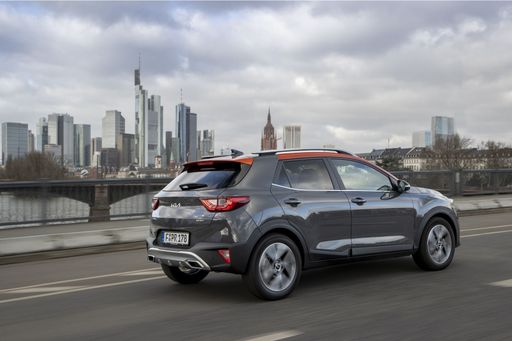 @ Kia Corporation
@ Kia Corporation
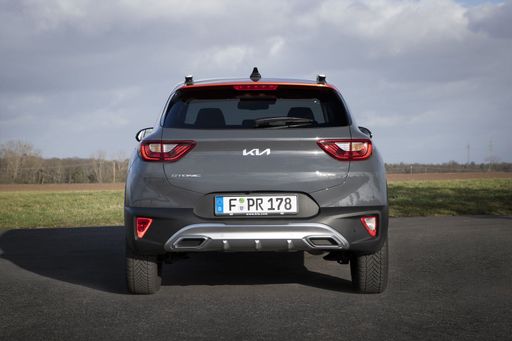 @ Kia Corporation
@ Kia Corporation
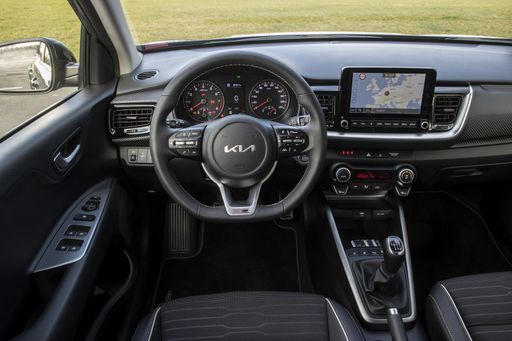 @ Kia Corporation
@ Kia Corporation
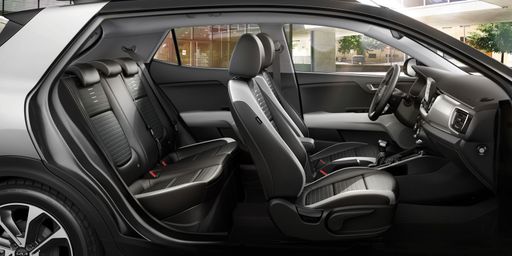 @ Kia Corporation
@ Kia Corporation
 @ Dacia / Renault Group Media
@ Dacia / Renault Group Media
|
 @ Kia Corporation
@ Kia Corporation
|
|
|
|
Costs and Consumption |
|
|---|---|
|
Price
10700 - 16700 £
|
Price
19400 - 25600 £
|
|
Consumption L/100km
5.3 - 7.1 L
|
Consumption L/100km
5.5 - 5.7 L
|
|
Consumption kWh/100km
-
|
Consumption kWh/100km
-
|
|
Electric Range
-
|
Electric Range
-
|
|
Battery Capacity
-
|
Battery Capacity
-
|
|
co2
105 - 140 g/km
|
co2
125 - 129 g/km
|
|
Fuel tank capacity
32 - 50 L
|
Fuel tank capacity
45 L
|
Dimensions and Body |
|
|---|---|
|
Body Type
Hatchback
|
Body Type
SUV
|
|
Seats
5
|
Seats
5
|
|
Doors
5
|
Doors
5
|
|
Curb weight
1089 - 1209 kg
|
Curb weight
1195 - 1260 kg
|
|
Trunk capacity
328 L
|
Trunk capacity
352 L
|
|
Length
4088 - 4099 mm
|
Length
4140 mm
|
|
Width
1848 mm
|
Width
1760 mm
|
|
Height
1499 - 1535 mm
|
Height
1505 mm
|
|
Max trunk capacity
1108 L
|
Max trunk capacity
1155 L
|
|
Payload
404 - 436 kg
|
Payload
450 - 455 kg
|
Engine and Performance |
|
|---|---|
|
Engine Type
Petrol, LPG
|
Engine Type
Petrol, Petrol MHEV
|
|
Transmission
Manuel, Automatic
|
Transmission
Manuel, Automatic
|
|
Transmission Detail
Manual Gearbox, CVT
|
Transmission Detail
Manual Gearbox, Dual-Clutch Automatic
|
|
Drive Type
Front-Wheel Drive
|
Drive Type
Front-Wheel Drive
|
|
Power HP
67 - 110 HP
|
Power HP
100 HP
|
|
Acceleration 0-100km/h
10 - 16.7 s
|
Acceleration 0-100km/h
11.3 - 12.4 s
|
|
Max Speed
158 - 183 km/h
|
Max Speed
176 - 179 km/h
|
|
Torque
95 - 200 Nm
|
Torque
172 - 200 Nm
|
|
Number of Cylinders
3
|
Number of Cylinders
3
|
|
Power kW
49 - 81 kW
|
Power kW
74 kW
|
|
Engine capacity
999 cm3
|
Engine capacity
998 cm3
|
General |
|
|---|---|
|
Model Year
2024 - 2025
|
Model Year
2024 - 2025
|
|
CO2 Efficiency Class
D, C, E
|
CO2 Efficiency Class
D
|
|
Brand
Dacia
|
Brand
Kia
|
What drive types are available for the Dacia Sandero?
The Dacia Sandero is available as Front-Wheel Drive.
The prices and data displayed are estimates based on German list prices and may vary by country. This information is not legally binding.
